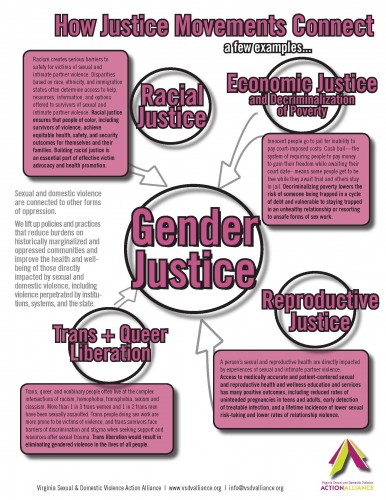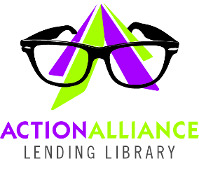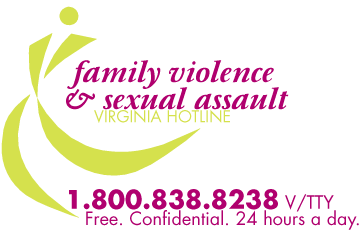Resources Library: Community Coordination & Collaboration
Start a Search:
Guidance on Access to Domestic and Sexual Violence Service
Memorandum that provides clarification on law and policy with regard to Virginia’s Local Family and Intimate Partner Fatality Review Teams’ review of service information for decedents who had accessed sexual and domestic violence services.
Written by: Virginia Department of Health, Office of the Chief Medical Examiner. September, 2010. 10 pages.
Harm and Accountability Conversation Seed Packet: A Discussion Guide to Support Sexual & Domestic Violence Programs as You Hold Conversations About Harm, Accountability, and Healing

The Harm and Accountability Conversation Seed Packet is a guide to help people working in sexual and domestic violence programs begin to think more broadly about what accountability can and should look like, not only after harm is committed, but also in all aspects of their lives: our relationships, families, workplaces, and communities.
The 95-page document includes 17 exercises and concrete steps for folks working in sexual and domestic violence agencies who want to expand their knowledge and practice of effective accountability.
Examples of activities in the discussion guide include:
• Responding to harm caused by individuals vs. systems
• How shame can block accountability
• What is the “victim/perpetrator binary” and how does it impede our work?
• Accountability and punishment Venn diagram
• What are the obstacles to accountability and how to overcome them?
• How to give a genuine apology
• Healing and accountability wheel
The discussion guide is designed to be a toolkit for holding conversations in your workplace, communities, and families. It was written to spark discussions about what paths exist for promoting accountability and how we can practice it in our own lives to model it for our friends, families, coworkers, and communities.
The guide asks us to consider what systems for supporting accountability currently exist, and to imagine new ways of approaching our responses to harm…approaches that not only reinforce accountability but also strengthen connection and healing.
Homicide: An Analysis of Homicide in Virginia Among Those 50 Years or Older, 1999 – 2007
A brief article examining intimate partner homicide in people age 50 or older which considers the following questions: (1)what were the characteristics of persons 50 years of age or older who were killed as a result of intimate partner discord or violence and (2) what were the circumstances surrounding intimate partner homicide events in which decedents were persons 50 years of age or older?
Published by: Virginia Department of Health, Office of the Chief Medical Examiner. June, 2010. 14 pages.
How Community Service Boards and Domestic Violence Programs Can Help Each Other
This Power Point presentation was developed and presented by Martha Kurgan from the Department of Behavioral Health and Developmental Services at the Virginia Department of Social Services Promising Practices conference on September 16, 2013.
Infographics: How Oppressive Systems Connect and How Justice Movements Connect

Gender-based violence (or the process of controlling, coercing, or otherwise exerting power over someone because of their gender) is both a tool and a driver of white supremacy. Ending gender-based violence requires us to see and dismantle the same forces that support the existence of white supremacy. At the same time, this work calls us to envision and work toward equity and liberation, while breaking out of silos.
The infographic, "How Oppressive Systems Connect" illustrates examples of how gender-based violence is driven by white supremacy, sexism, heterosexism, and capitalism. "How Justice Movements Connect" illustrates examples of how gender justice is supported by movements to build racial justice, economic justice, trans and queer liberation, and reproductive justice.
These resources are helpful for your prevention work, new staff orientation, volunteer training, board training, and other environments where you are exploring the many ways in which work to end sexual and intimate partner violence intersects with work to build racial justice, reproductive justice, economic justice, and trans and queer liberation.

